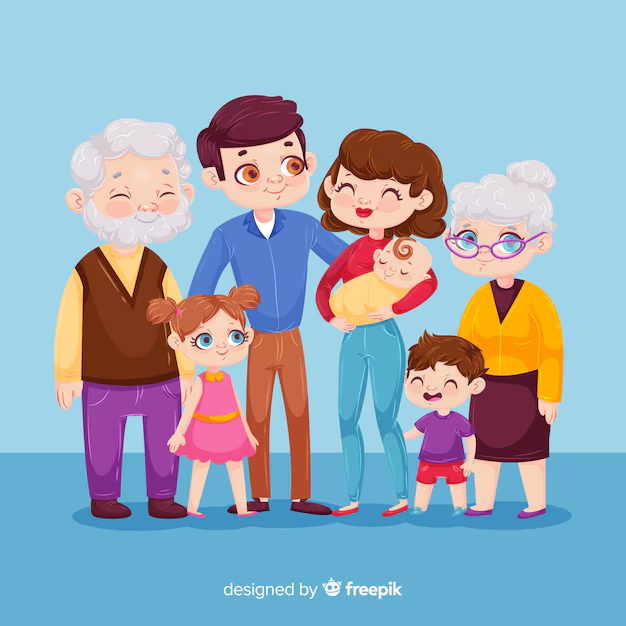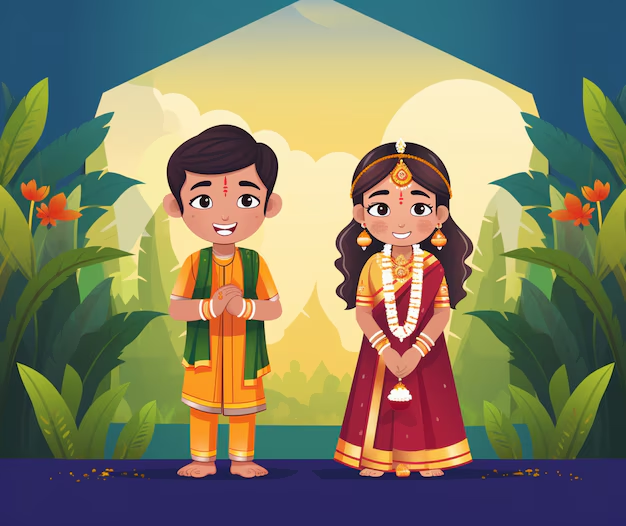Changing Families – Complete Guide For Class 4 EVS Chapter 9
Welcome to iPrep, your Learning Super App. Our learning resources for Chapter 9, “Changing Families,” in Class 4 EVS are meticulously designed to ensure students gain a comprehensive understanding of this essential topic. These resources include detailed notes, interactive exercises, and practical examples that cover the entire spectrum of key concepts. From fundamental principles of family structures, such as nuclear and extended families, to the various roles and responsibilities of family members, the materials promote holistic learning.
The chapter also addresses how societal changes, like urbanization and technology, influence family dynamics and relationships. Engaging activities encourage students to reflect on their own family experiences while fostering discussions on values like respect, love, and support within families. Ultimately, the resources aim to nurture empathy and understanding as students explore the diversity of family life in contemporary society.
The concept of “Changing Families” in Class 4 EVS delves into the foundational principles of life by exploring the essential characteristics that define modern family structures. It examines how families evolve in response to societal changes, including shifts in cultural norms, economic factors, and advancements in technology. The chapter emphasizes the importance of understanding diverse family forms, such as single-parent households, blended families, and same-sex parents, fostering an inclusive mindset among students.
Additionally, it highlights the roles and responsibilities of family members and how they can adapt to changing circumstances, promoting cooperation and communication. Through engaging discussions and activities, students are encouraged to reflect on their family dynamics and appreciate the value of love, support, and resilience within their families.
Objectives of Learning Changing Families
By studying Class 4 EVS Chapter 9: Changing Families, students will:
- Understand the different types of family structures, such as nuclear, joint, and extended families.
- Explore how societal changes like migration, urbanization, and technology impact family dynamics.
- Learn about the roles and responsibilities of family members in different contexts.
- Appreciate the diversity in family traditions, customs, and values across cultures.
- Develop empathy and respect for varying family experiences and challenges.
- Reflect on their own family life and identify changes over time through engaging in activities.
These objectives aim to promote critical thinking, cultural awareness, and emotional understanding in students. Now let’s start the chapter by getting to know about the new arrival in the family.
A New Arrival!
There is great excitement in Nimmi’s family as they welcome a new baby sister as mentioned in the chapter Changing Families.

Who were the members of Nimmi’s family before the arrival of her baby sister?
| Family Member | Relationship |
| Nimmi | Sister |
| Radha | Sister |
| Dadiji | Grandmother |
| Father | Father |
| Mother | Mother |
How many members are there in Nimmi’s family now?
As mentioned in the chapter changing families, there are six members in Nimmi’s family:
- Nimmi
- Radha
- Dadiji
- Father
- Mother
- New baby sister
Let’s Talk
After the arrival of the new baby, life in Nimmi’s family changes in many ways:
- How will Nimmi spend her day now?
Nimmi may have to help take care of her baby sister, which might include feeding or playing with her. - What new work will her mother do now?
Her mother will have additional responsibilities, like feeding and caring for the new baby. - How will the daily work of Nimmi’s father, grandmother, and uncle change?
They may also have to help out more at home, perhaps with chores or babysitting.
Looking Around
Has a small brother or sister been born in your home or any house in your neighborhood? Reflect on how it feels to have a new baby at home and discuss how things have changed.
Find Out About the Youngest Child
Collect information about the youngest child in your family or a relative’s home, and answer the following questions:
Question Answer When was the baby born? Is the baby a boy or a girl? How are you related to him/her? Where was the baby born? What does the baby look like? What is the color of his/her hair? What is the color of his/her eyes? Does the baby have any teeth? What do we feed the baby with? What is the baby’s length?
More Questions
Some other questions from class 4 EVS chapter 9 changing families are as follows-
- How many hours a day does the baby sleep?
- What different sounds does the baby make?
- Who does the baby stay with most of the time?
- Stick a photograph of the baby or draw a picture in your notebook.
New Place
Tsering’s family is also experiencing change as Tsering’s father receives a letter informing him of a promotion that requires the family to move to another city.
Family Reactions

When Tsering’s father showed the letter to his family, there might have been mixed feelings, including excitement, sadness, and anxiety about the move.
Looking Around

What changes will occur in Tsering’s family after his father’s transfer?
- Who will live with his father in the new place?
- Which school will Tsering attend now?
- Will he have new friends?
Have any family members moved to a new place for work? Share your feelings about this change.
Classmates’ Experiences
Speak with classmates who have relocated and gather information about their experiences. Questions to ask:
- Where has he or she come from?
- What was his or her old school like?
- What differences does he or she notice here?
- Does he or she like the change?
It’s a Wedding!
There is great joy in Nazli’s home today as her elder cousin’s brother is getting married.

Let Us Talk
Will there be any changes in Nazli’s family after this wedding? Consider the impact on both Nazli’s family and the home from where the new bride has come.
Looking Around
Talk to your mother and aunts about their experiences before marriage:
- Where did they live?
- Who were the members of their families then?
If someone in your family has married recently, write about the event:
Aspect Description Special food cooked Special clothes worn by the bride Special clothes worn by the groom Songs and dances performed.
Reasons for Changes in Families
As mentioned in the chapter Changing Families, Changes can happen in families for various reasons. Here’s a summary of the reasons for the changes in the families of Nimmi, Tsering, and Nazli.
Family Reasons for Change Nimmi’s family Birth of a new sibling Tsering’s family Father’s job transfer Nazli’s family Wedding of an elder cousin
More Reasons for Family Changes
Discuss and think of other reasons for changes in families.
Interviewing Older Generations
Talk to three older people: one from your family, one from a friend’s family, and one from a neighborhood family. Ask them the following questions and fill in the table.
Question Your Family Friend’s Family Neighbor’s Family Since how many years has your family been here? Where did your family live before coming here? How many members are there in your family today? How many members were there in your family 10 years ago?
My Family – Yesterday, Today, Tomorrow…
All families change for different reasons. Has your family changed too?
Family Trees

- Draw your family tree from last year.
- Ask your grandparents about their family when they were your age and draw their family tree.
- Draw your current family tree and identify where your grandparents are.
Let Us Talk
In what ways is your family tree different from your grandparents’ family tree when they were young?
Going Back to School
Reflect on education in your family.
- Up to which class do you want to study?
- Up to which class have your parents studied?
- Till which class did your grandmother get a chance to study?
Child Marriage
Discuss the legal age for marriage and the importance of education. Share stories of those who have returned to school after early marriage.
Looking Around
Find out about children in your neighborhood who had to drop out of school. Gather information about their current situation and express your thoughts on child marriage and education.
Let’s Conclude
The chapter “Changing Families” in Class 4 EVS invites students to explore the evolving nature of family structures, their dynamics, and their cultural significance. By diving into real-life scenarios and engaging in activities, learners gain a deeper appreciation for how societal changes impact families. Whether it’s Nimmi welcoming a new sibling, Tsering relocating to a new city, or Nazli celebrating a family wedding, each story highlights the diversity of family experiences and the reasons behind these transformations.
At iPrep, we ensure that every aspect of Class 4 EVS Chapter 9: Changing Families is explained in a relatable and engaging manner. Our comprehensive learning materials aim to foster empathy, understanding, and a sense of belonging among students. This guide equips learners with the knowledge to reflect on their own families and appreciate the variety of family dynamics in their communities.
So, dive into “Changing Families” for Class 4 EVS on iPrep and enrich your understanding of how families evolve over time. Explore this fascinating topic to develop not just knowledge but also values like love, respect, and adaptability, which are essential for building stronger connections in an ever-changing world.
Practice questions on Chapter 9 - Changing Families
Get your free Chapter 9 - Changing Families practice quiz of 20+ questions & detailed solutions
Practice Now








